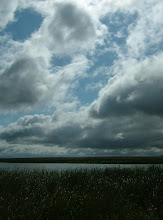I have to write it down because I cannot quite believe it myself. I was arguing one day about whether the demise of the honeybee was such a bad thing and my argument was that the honeybee is not native to North America, so it is suppressing the populations of the native bees.

If there were no more honeybees, the native bees would repopulate the continent to take over pollination duties and improve the environment as ecosystem. My friend said there were not nearly enough native bees to do all the pollination that honeybees do and I said there were at least 5 native species of bumble bees and 400 species of native solitary bees and he called me a liar. Well, admittedly, I pulled those numbers out of the air. So I looked it up. And there are 45 species of social bumble bees native to North America and . . . I told you I could hardly believe it myself . . . over 4000 native species of solitary bees! And it is true that if honeybees were eliminated from North America, the native bee populations would rebound.

It would take a season or maybe two for them to increase in population enough to take over all the pollination now accomplished by honeybees, so we would indeed have a reduction in the quantity of some products like almonds and peaches and apples for a season or maybe two. But they would come back from the remnant populations that still exist to populations that fit the availability of pollen and nectar.
Have I piqued your interest, making you wonder what social bees and solitary bees are and how they differ from honeybees? Well, solitary bees work alone, finding or making a hole in a plant or in dead wood or even finding holes in rocks, and filling that hole with plant nectar and pollen.

They then lay an egg in the hole, then sealing it shut. The egg hatches into a larva, whose food is the pollen and nectar packed into the cell. When the food supply is gone, the bee larva pupates, then emerges from the holes as an adult. These bees range in length from 1/8" to over an inch and can be black or brown or even metallic colors like red, orange, amber, blue, and green.
It is while they wander from flower to flower to gather pollen and nectar that they accidentally brush pollen from one flower onto another flower. This pollen exchange is how the genetics keep mixed up and how the open pollinated plants keep diverse in their ability to tolerate moisture conditions, temperature variations and so on, and this cross-pollination allows the diversity on which natural selection works to cause the slight genetic shifts through which evolution happens.
Social bees work together instead of alone and they make their own groups of cells instead of finding them. The workers pack pollen and nectar into the cells, and a special queen bee lays eggs in them while the workers go about the other business of making, filling, and maintaining cells. Each cell is filled with just enough food for that one larva, and at the end of the season, a new queen is grown, who goes out and mates with a drone and then hibernates until spring. The entire rest of the hive, all the workers and drones, die off. The queen wakes in the spring and begins to build some cells that she lays her first eggs into. When these emerge, they become the workers and she then specializes on only egg laying.

Honeybees are special because instead of the workers dying each fall, they live over the winter, so they must have food stored for when there are no flowers. This stored food is honey. It is make entirely by evaporating nectar. The only reason they make it is to have food to survive the winter. If we harvest it early enough in the season they recognize the shortage and make more before winter, and that is how we get them to make honey for us in addition to making if for their own use over winter. Other social bees do not make honey because they do not need it since all but the hibernating queen die.
Let's review: How many native bee species? 4000. Yes, four thousand! How many bumble bee species? 45.



























